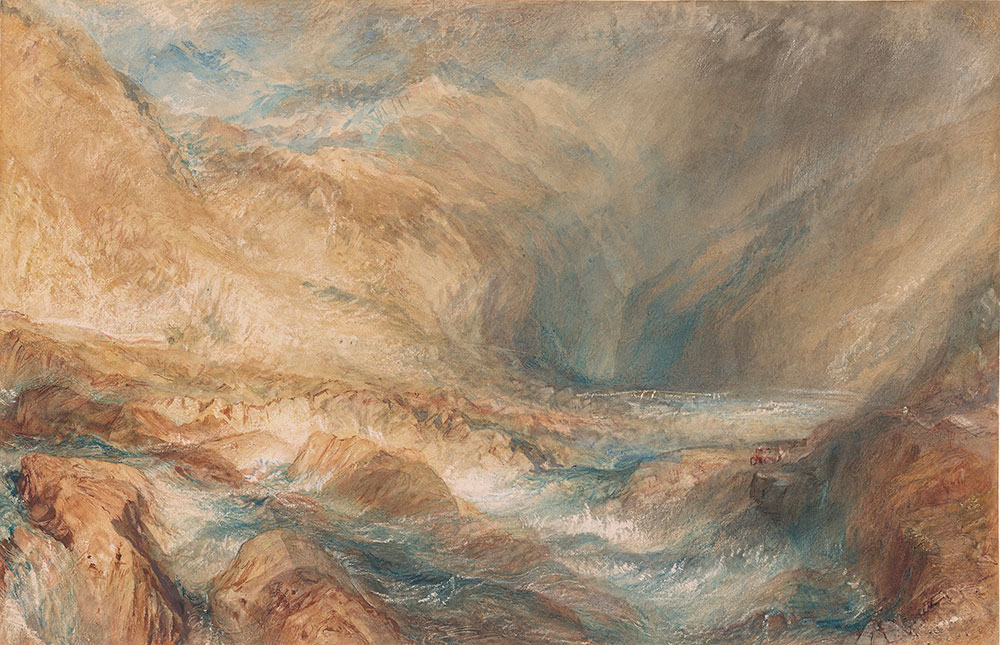
Every spring the ice melts at St. Gotthard’s Pass in the Alps near Faido and turns the Ticino River into a torrent that sweeps rocks downstream. Turner traveled there on a tour of Switzerland in 1842 and made a rapid sketch that he showed to John Ruskin on his return to England. Ruskin promptly commissioned this finished watercolor from Turner, arguing that it was “the greatest work he produced in the last period of his art.” Turner himself made the rare comment that he was pleased with the result.
J. M. W. Turner
British; 1775–1851
The Pass at St. Gotthard, near Faido, 1843
Watercolor over graphite
2006.52
For an artist like J.M.W Turner, fascinated with nature in its most sublime and terrible aspects, a trip to the Alps was practically a necessity, and Turner returned off into Switzerland. He spent every summer there between 1840 and 1845, and in 1842, he climbed the pass above St. Gotthard and witnessed the Ticino River in its spring torrent when melting snow swelled the river. He made a sketch of the scene, and when he showed that sketch to the critic, John Ruskin, later that year, Ruskin commissioned a finished watercolor, the work now in the Thaw collection.
Turner has greatly exaggerated the topography of the scene, and when Ruskin visited the site himself in 1845, he noted "that the mountains, compared with Turner's colossal conception, look pygmy and poor." Yet, as Ruskin wrote a decade later in his modern painters, "The aim of the great inventive landscape painter must be to give the far higher and deeper truth of a mental vision rather than that of the physical facts." Turner's technique is as extraordinary as his vision, delineating the mountains with layers of watercolor, scraping away layers of paint and paper, and then adding further layers of color and wash as he conveys the light, mist and rushing water of the mountain pass.
